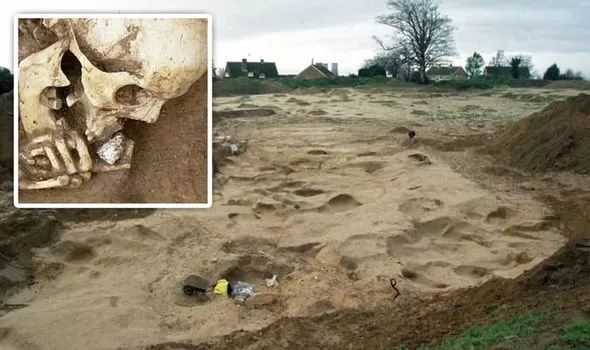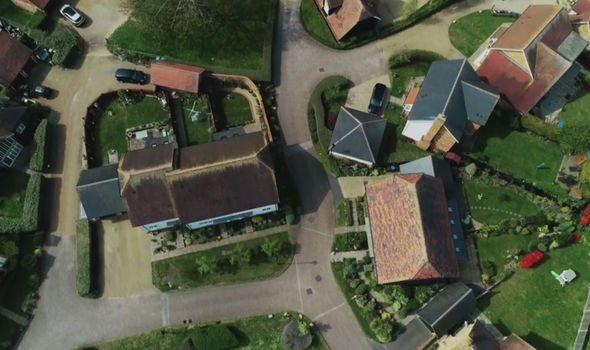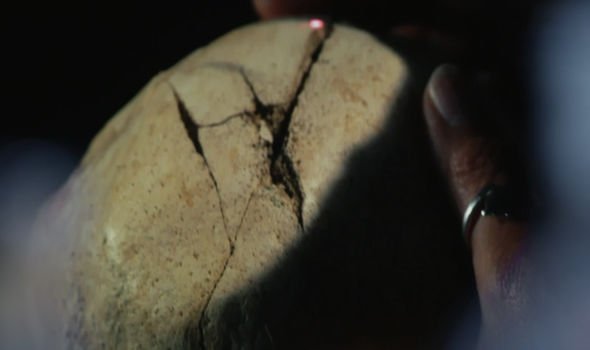Archaeologists stunned as ‘Britain’s most exciting’ mystery solved after 4,000 years
In 2004, Wessex Archaeologists Ltd were called in by architects to excavate land at Cliffs End Farm prior to building a new housing development.
Suspicions were heightened after earlier investigations showed that the site had been occupied during the early and late Bronze Age, between 2,400BC and 700BC and again in the early Saxon period of 400AD to 600AD.
But what archaeologists found came to be dubbed “Britain’s most exciting historical discovery,” as numerous deposits of human remains were found alongside near-complete carcasses of animals in what was believed to be ritual burials.
Now, more than a decade later, archaeologist Tori Herridge pieced together the exact contents of these mass graves during Channel 4’s “Bone Detectives” series.
She said during Saturday’s show: “It’s hard to believe, but beneath this estate lies one of Britain’s most exciting historical discoveries.
“Back in 2004, when these houses were still drawings on an architect’s plan and this whole area was a farmer’s field, archaeologists were called in.
“What they found was an extraordinary complex of structures, a deep oval-shaped pit and a disturbing collection of bones, human bones.


“But who were these people and what happened to them?”
Dr Herridge went on to detail more specifics.
She added: “They were excavated, specifically this northeastern corner here in a place called the Isle of Thanet, but not an island today, I hasten to add.
“They were around here between Ramsgate and Sandwich, that’s where they were excavating.”
Dr Herridge then took viewers to look at one skeleton in specific, before asking osteoarchaeologist Jackie McKinley to explain what she had discovered.

Dr McKinley said: “This is from the Late Bronze Age, so it’s ninth to 11th century BC, 3,000 years ago.
“We have 23 individuals in total from this site, most of them were adults.
“We have rather more females than males, overall 12 females to eight males (three unidentified).
“The really interesting ones were the six in situ ones that were associated with the pit, five of which were in the base and this was one of those.”
Dr Herridge explained why this skeleton stuck out to experts the most.


She added: “This is the eldest of the individuals that we had, she was the primary deposit, the first to be deposited in the base of this pit and buried there.
“She was certainly over 55 years of age, it’s quite difficult to age people when they get to that kind of age because you are going on degenerative processes.
“If you look at this one, this is the neck vertebrae and you can see the breakdown in the surface, you’ve got pitting, you’ve got little holes and new bone around the edges.
“This level of wear really shows a very old individual this has happened to.
“If you look up here you can see this incredible amount of wear to the teeth, all the enamel has worn away, so that’s telling me she was very old.”
However, the discovery also apparently proved the people had not been murdered, contrary to original theories.
Dr Herridge continued: “Usually we can’t tell what people die of, there aren’t many acute diseases that affect the bone, but in this instance, I know exactly how she died.
“For that, we just need to look at the skull, she’s been killed quite violently with a sword.”
But even stranger, strontium and oxygen isotope analyses revealed evidence for a mixture of people from the Western Mediterranean, Scandinavia and locals from Kent in the assemblage.
These long distances are made all the more remarkable as they were undertaken when some of the individuals were between the ages of three and 12.
The discovery suggests that Cliffsend was hugely important in Bronze Age Britain and held a very high spiritual importance to maintaining a strong civilisation.





